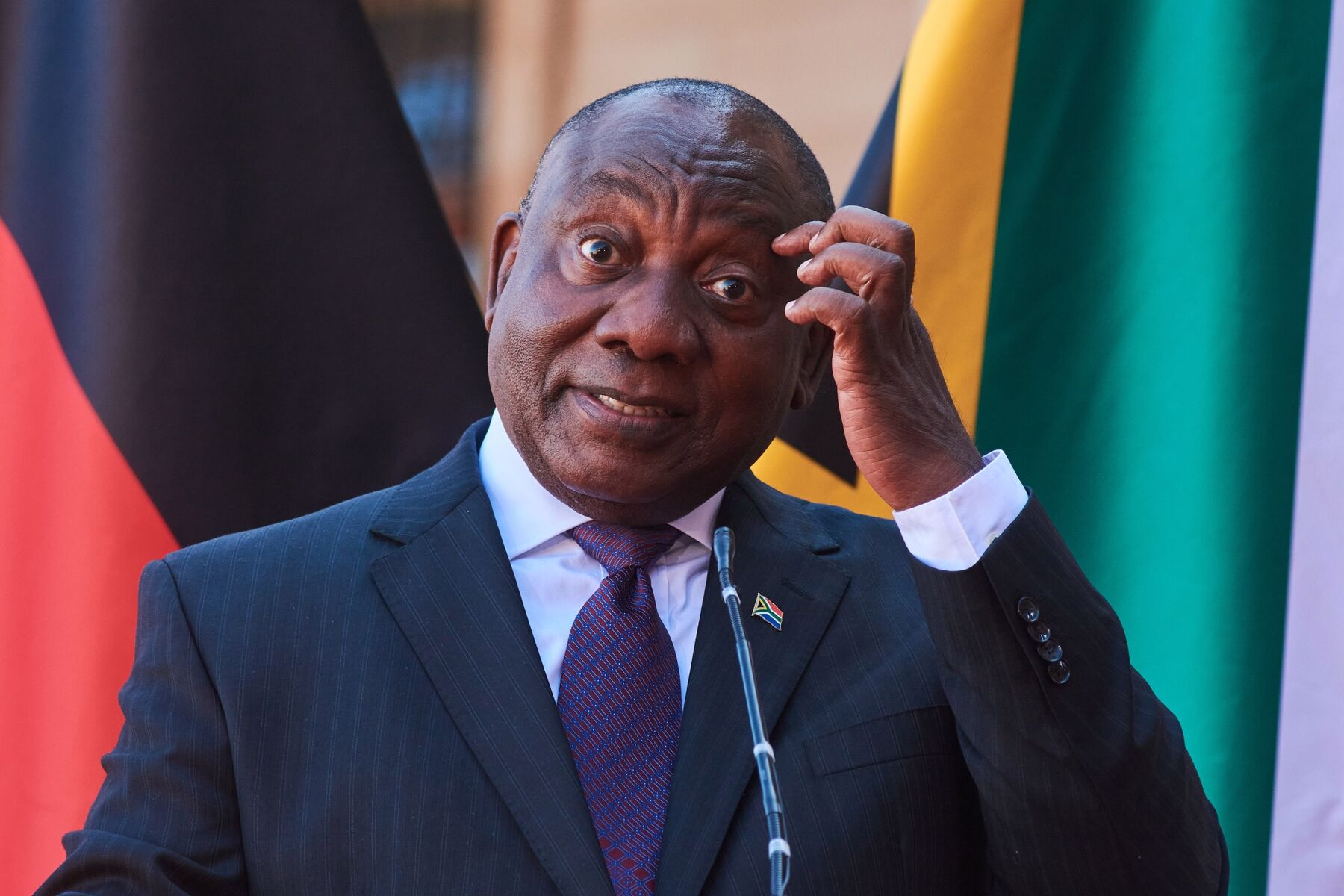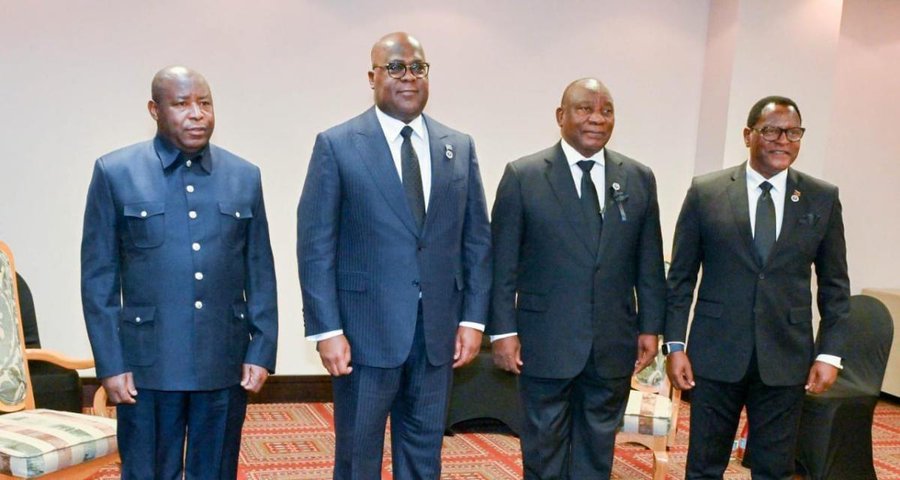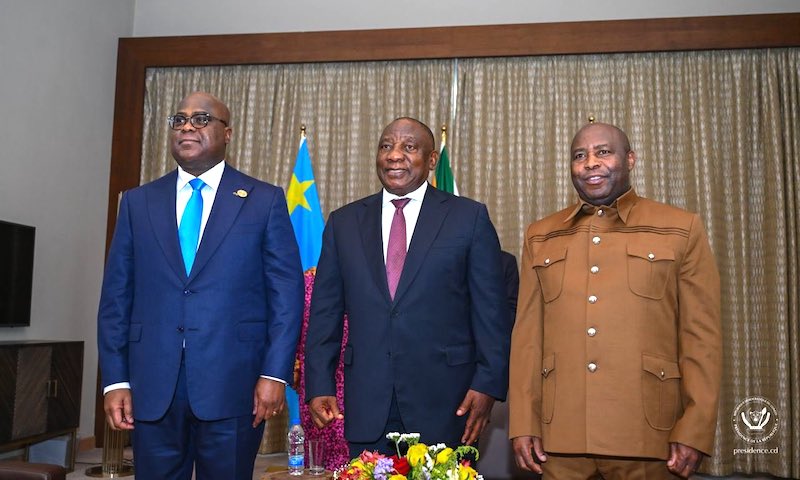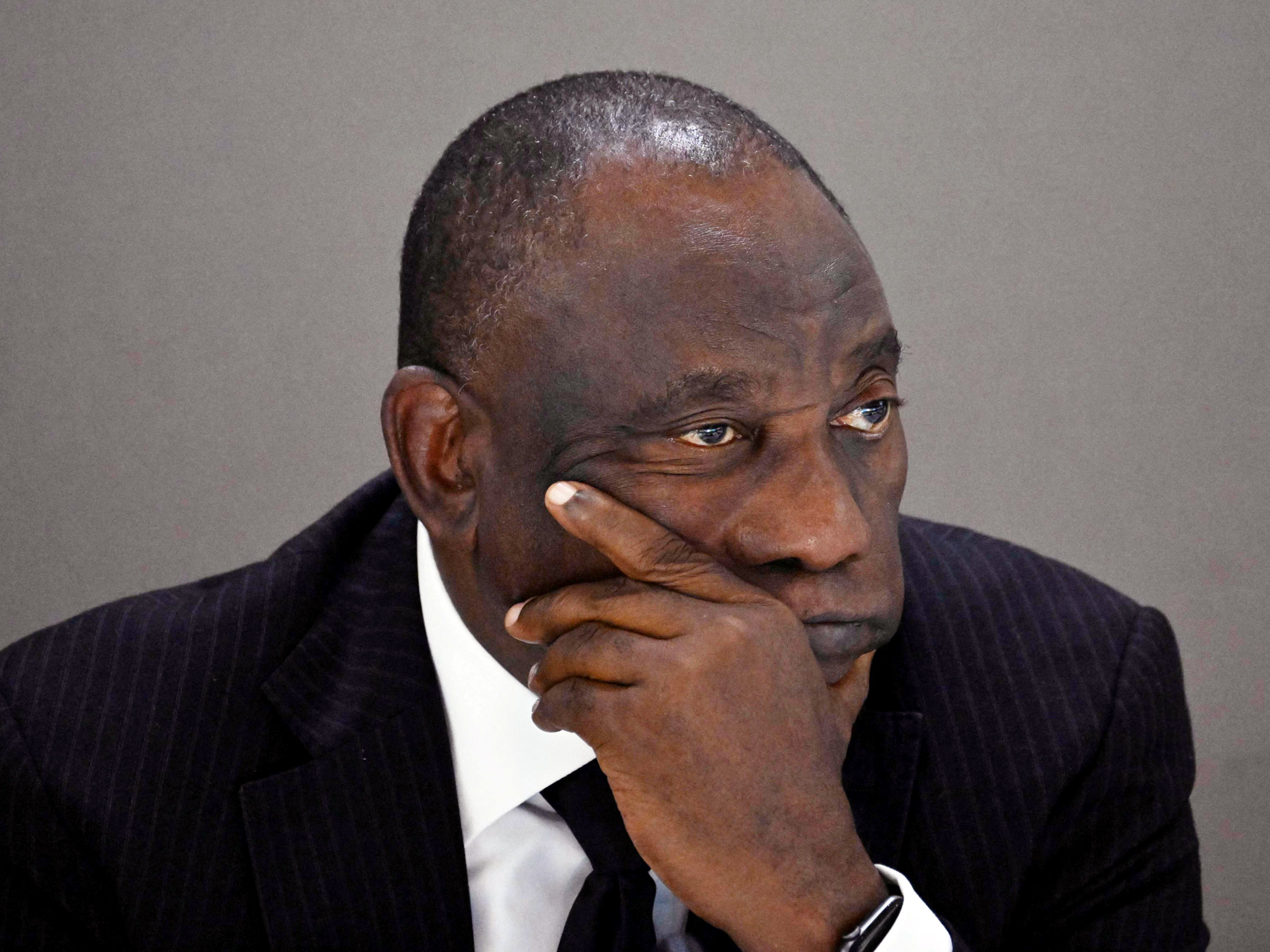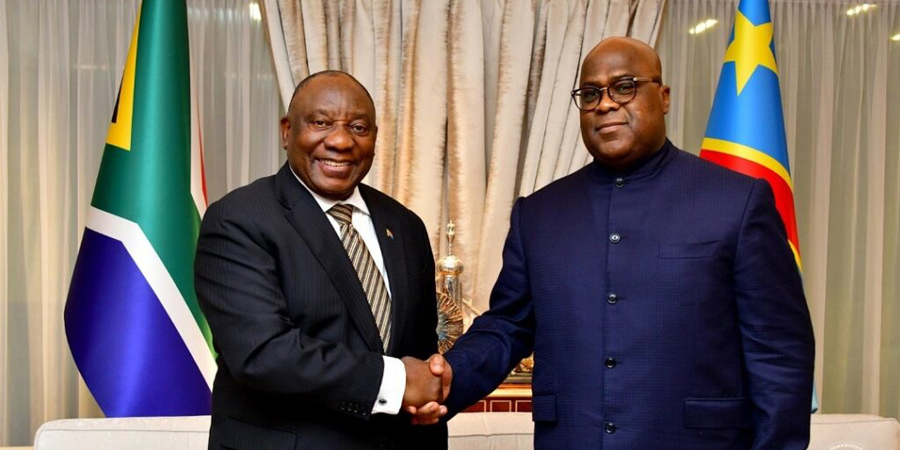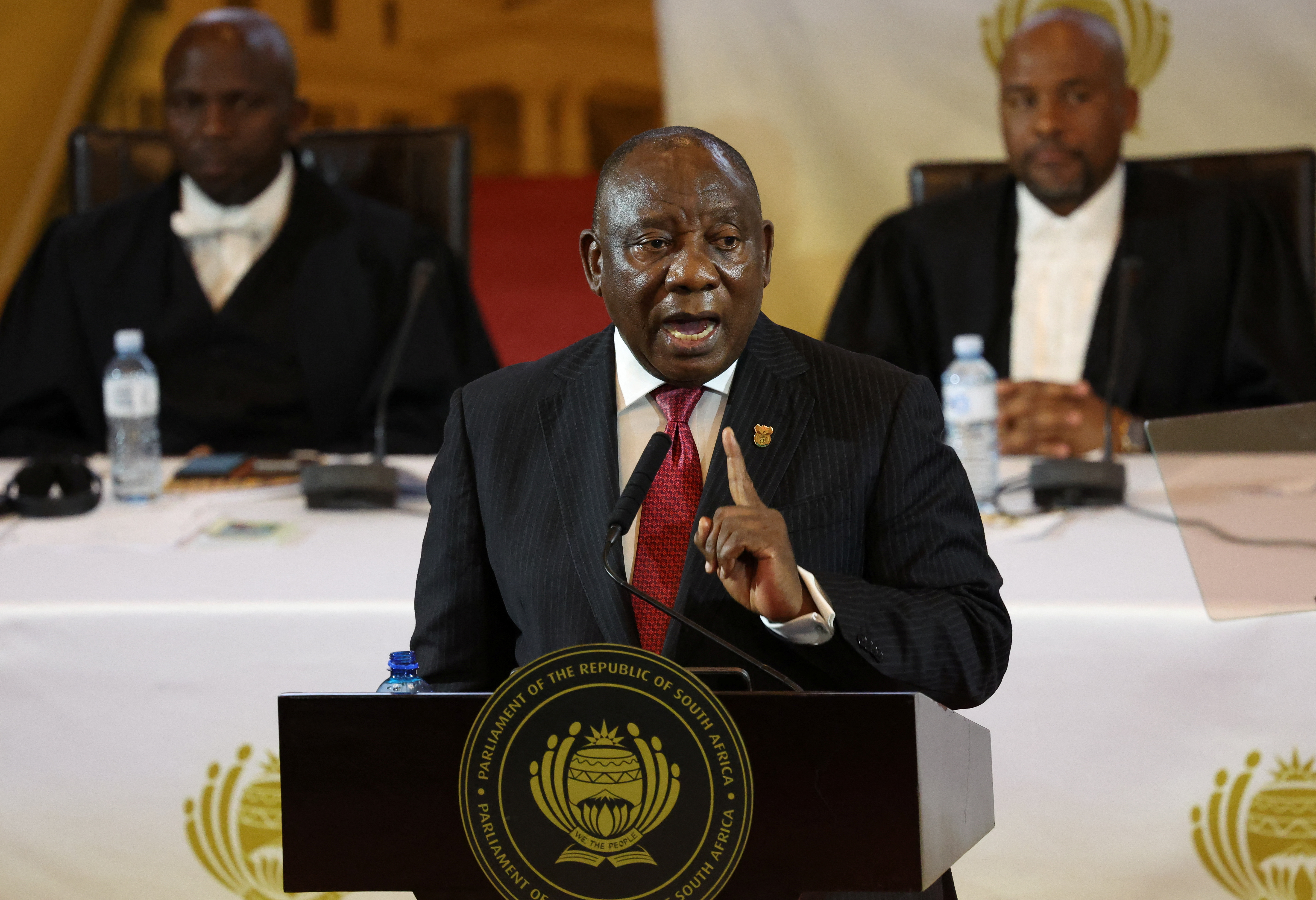Regional
What is Ramaphosa up to in DRC crisis?
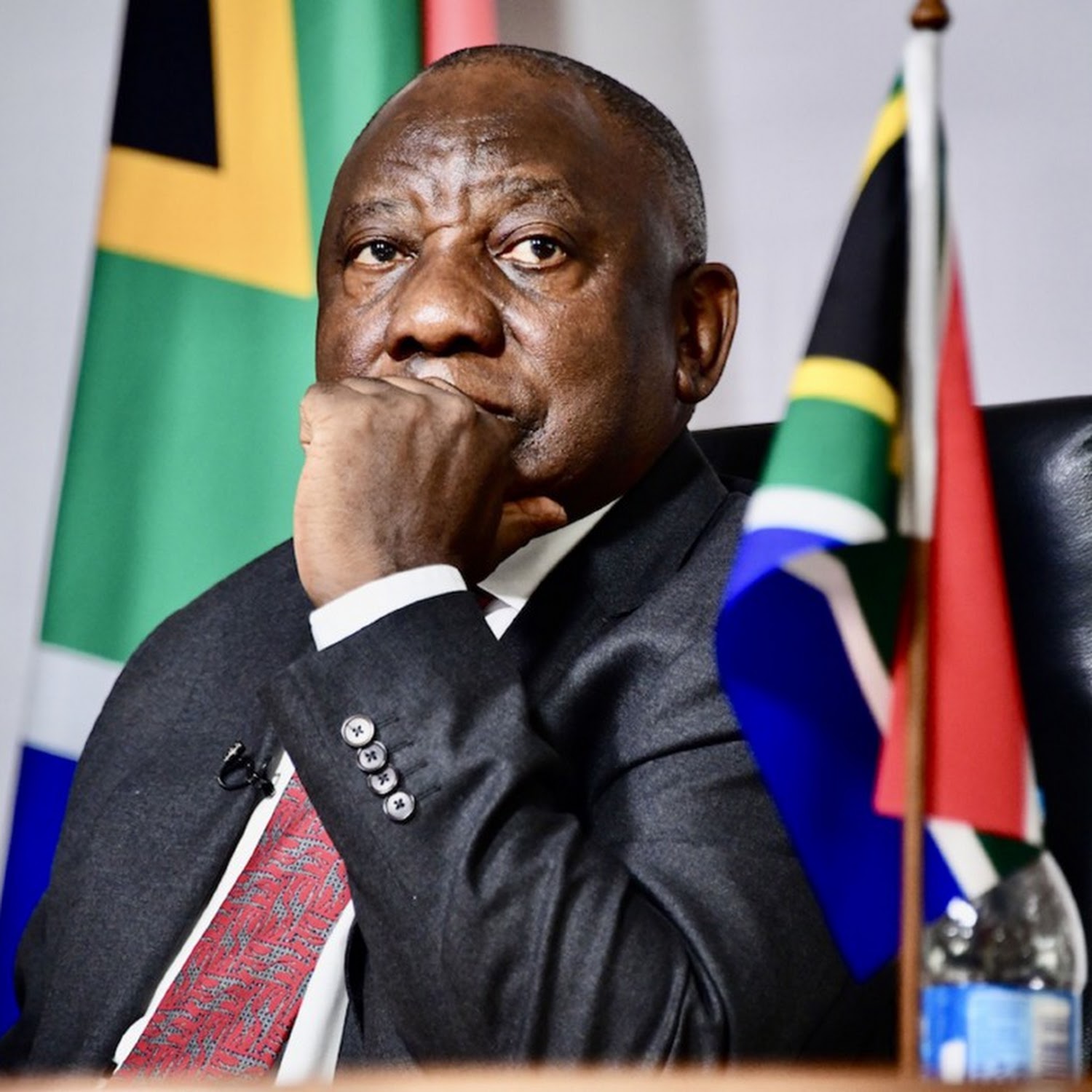
South African President Cyril Ramaphosa.
South Africa’s President Cyril Ramaphosa is fooling the international community about his stance on the ever-escalating armed conflict in the east of the Democratic Republic of Congo (DRC).
While he acknowledges that the
deteriorating security crisis in eastern DRC needs a political solution through
dialogues between concerned parties, his continued deploying of troops in the
South African Development Community (SADC) mission in DRC, SAMIDRC, whose aim
is to intervene militarily raises questions.
“The SAMIDRC in cooperation
with the Democratic Republic of Congo National Army (FARDC) will conduct
operations to neutralize M23 rebels, and maintain peace and security in
creating a secure environment as well as protect civilians and their properties
under imminent threats or attacks,” reads part of SADC’s statement dated May 5.
Ramaphosa’s army leads SAMIDRC
which was deployed to eastern DRC in December 2023 to combat M23 rebels,
following Congolese President Felix Tshisekedi’s decision to chase away the
East African Community Regional Force (EACRF) that had actually successfully
maintained a ceasefire in the volatile region, for eight months. The beginning
of 2024 saw SAMIDRC commencing heavy offensive operations against the M23
rebels, leading to the displacement of additional hundreds of thousands of
Congolese people.
"I leave Rwanda with
renewed vigor and intention that we should find a solution - a political
solution - to what is prevailing [in this region]," Ramaphosa told the
media in Kigali, on April 7.
After visiting Rwanda,
Ramaphosa visited Uganda on April 15, and South Sudan on April 16. He
emphasized that there is a need for a political solution to end the
deteriorating crisis in eastern DRC where his country deployed more than 3,000
troops as part of SAMIDRC.
Related: After
Ramaphosa’s visit to region, will Southern African troops withdraw from DRC?
Ramaphosa’s declarations in
Kigali, Kampala, and Juba, were enough for some security commentators to
believe that SAMIDRC was going to withdraw, in a bid to clear way for a
political solution. That did not happen.
Why, one might ask. South
Africa’s troop deployment is more for the securing of mineral deals than
restoring peace as SADC and Kinshasa explain. Seven days after Ramaphosa left
Kigali, his government delivered more weapons and ammunitions to eastern DRC.
“South Africa continues to
transfer ammunitions to Goma. On April 18, about 22 tons of ammunitions were
transferred from Upington, South Africa, to Goma, eastern DRC. Pretoria aims to
reinforce SANDF troops deployed under SAMIDRC,” a source told this website.
The same amount of ammunitions
had been already delivered on April 14 and April 16, making the total of 66
tons.
The same week Ramaphosa was
touring EAC bloc advocating for dialogue as the right path to a solution for
the long lasting armed conflict in eastern DRC.
Sources said South Africa’s
transferring of ammunitions to Goma was in preparation for heavy offensive against
M23 rebels.
SAMIDRC wanted to launch a big
attack on M23. The attack was plotted and executed in late April, but led to
seizure of Rubaya town by M23.
Related: South
Africa ups the ante in DRC conflict
“We shared our common view on
the resolution of conflicts not only on our continent but globally as well. We
agreed that the best way that is tried and tested of resolving conflicts is
still dialogue, through when people sit down and are able to find ways of
negotiating,” Ramaphosa said during press conference in Kinshasa on July 6,
2023.
Related:
Ramaphosa’s
double standards on DRC’s crisis
Ramaphosa’s statements gave
hope for security to Congolese people, but his aim was to only divert attention
of international community and Congolese population from a lucrative deal
between him and Tshisekedi.
Sources say South Africa deployed its troops and heavy artillery first of all to liberate the mineral rich area of Rubaya in Masisi territory, North Kivu, after which "Ramaphosa would begin paying himself back with transfer of minerals through his businesses in DRC."



